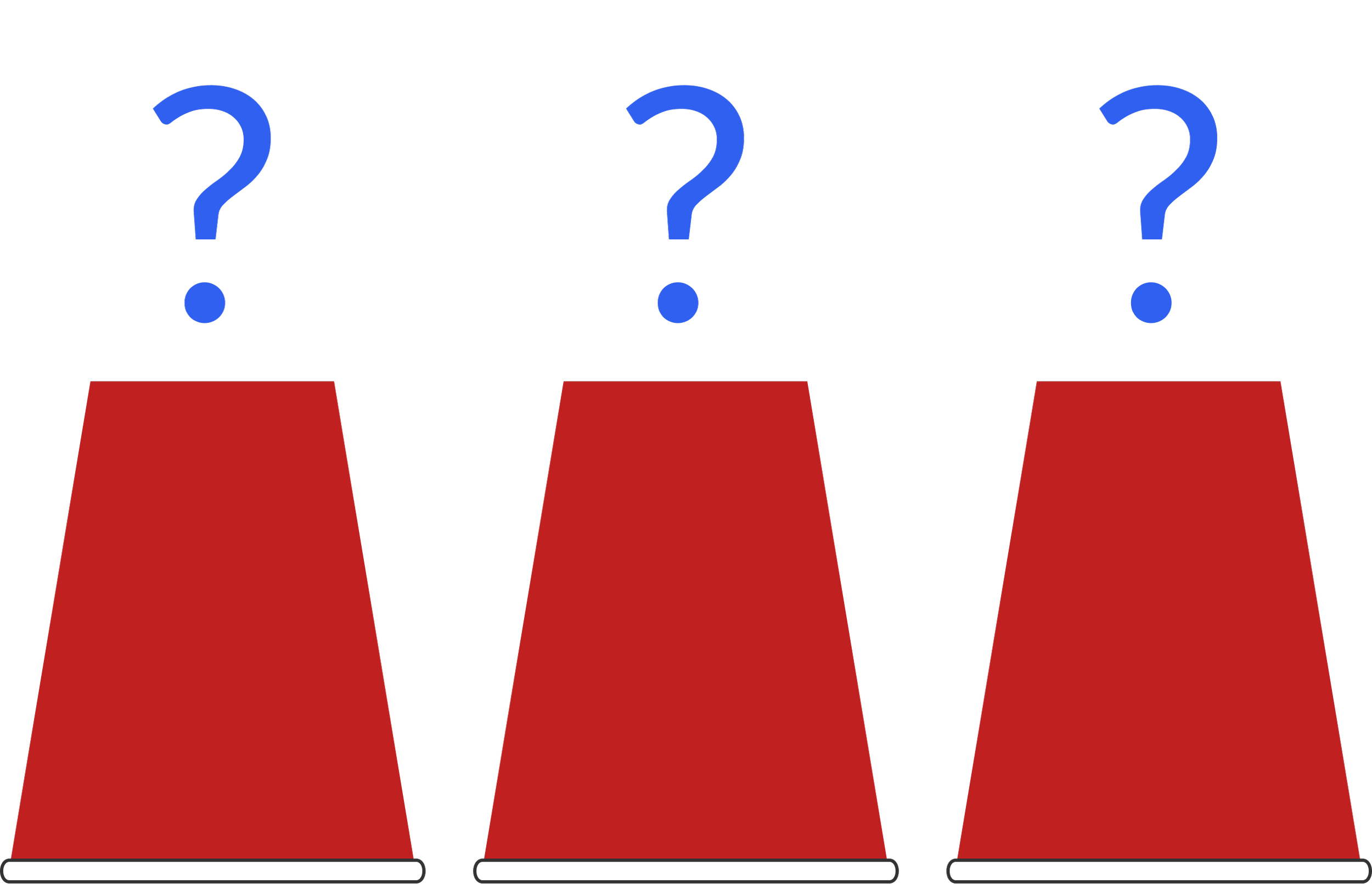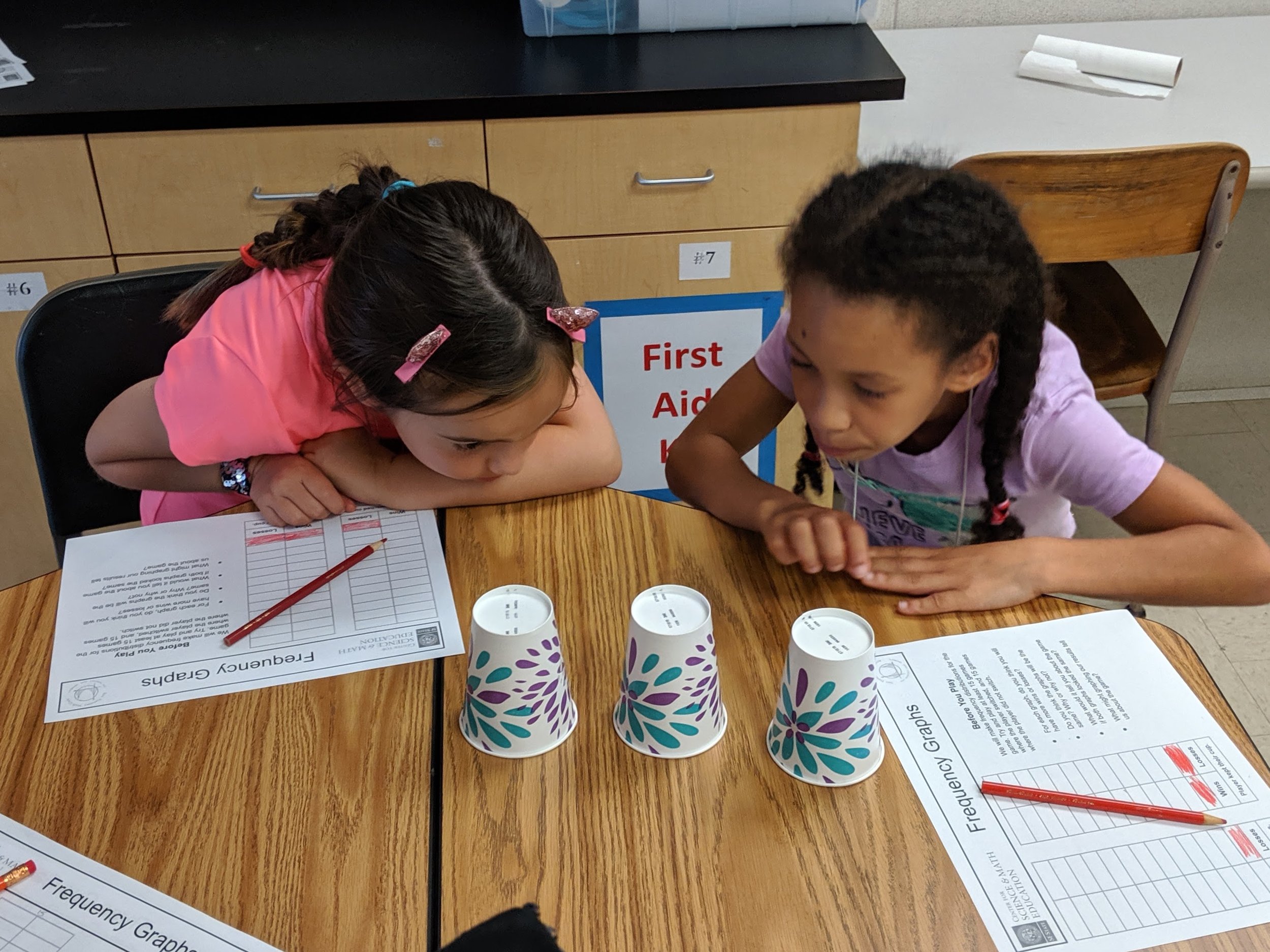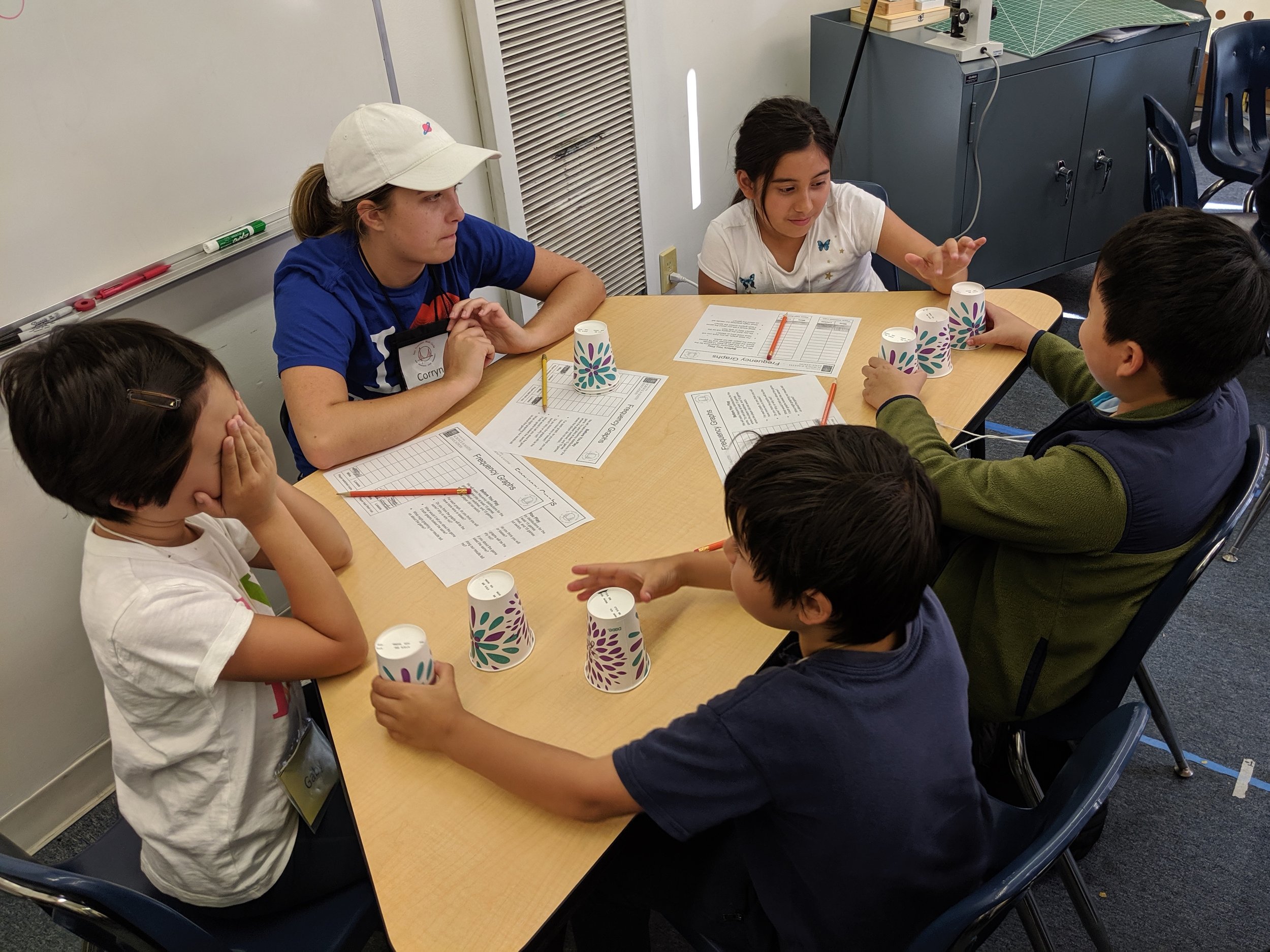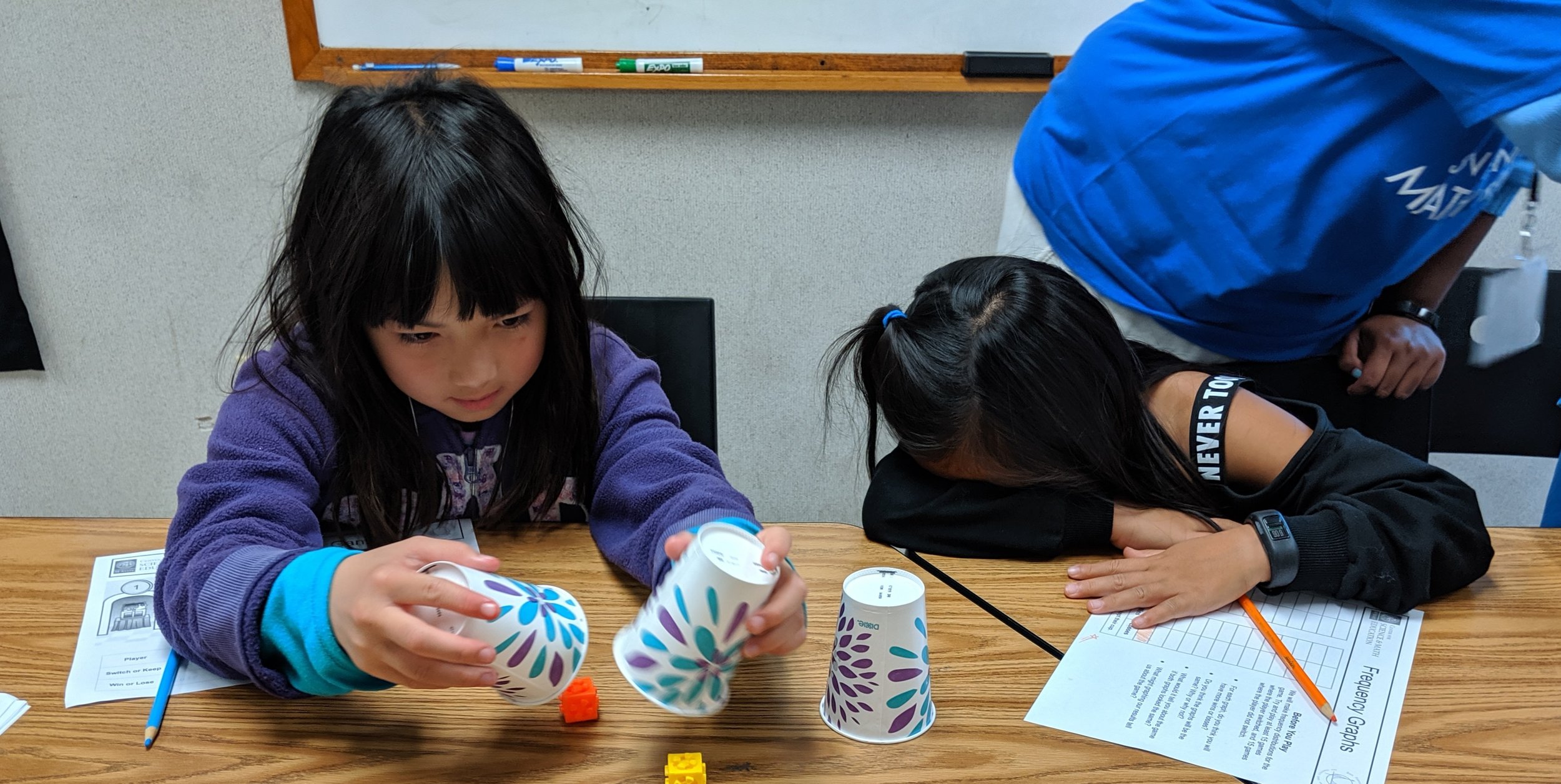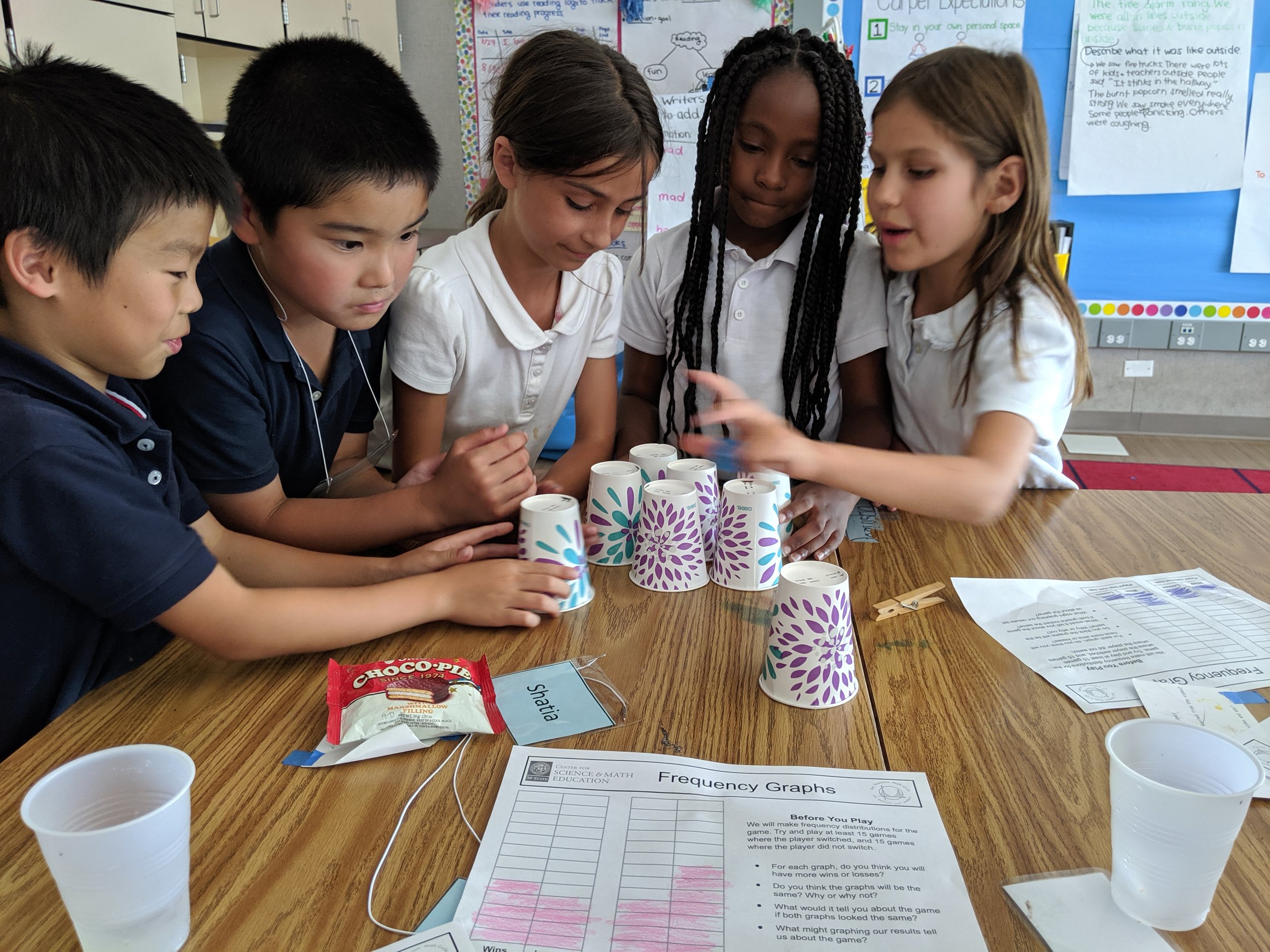Hide and Seek
How it works
Here are 2 different 2 player games that both involve making a guess about something that is hidden:
Number 2, Red or Blue
- There are 3 upside-down cups: One has 2 red cubes, one has 2 blue cubes, and one has 1 red cube and 1 blue cube
- The Seeker picks one of the cups
- The Hider then shows the Seeker one of the cubes under that cup and keeps the 2nd cube hidden
- The Seeker then guesses the color of the 2nd cube
Stay or Switch
- The Hider hides a cube under one of 3 upside-down cups
- The Seeker picks the cup they think the cube is under
- The Hider then picks a cup that isn't the Seeker's cup and that doesn't contain the cube, and reveals to the Seeker that the cube is not under this cup
- The Hider then gives the Seeker the option to stay with their original cup or to switch to a different cup
- After the Seeker decides whether to stay or switch, the Hider reveals which cup contains the cube
For each game, if you are the Seeker, can you come up with a strategy that gives you a better than 50-50 chance of winning?
In this activity, students start by playing Number 2, Red or Blue against each other, with the goal of figuring out a strategy for guessing the 2nd cube that gives them a better than 50-50 chance of winning. They collect data as they play and use this data to inform and assess their strategy for guessing. Then they play Stay or Switch with the same goal.
Why we like this activity
It’s fun! Students enjoy playing and thinking about the games.
It helps students develop probabilistic and statistical reasoning.
It requires students to engage in mathematical habits of mind:
- Using logic, finding and using strategies, looking for patterns, and making and testing predictions when trying to find a strategy that gives you a better than 50-50 chance of winning
It has a low floor and a high ceiling: Students can start playing the games by just guessing, but it’s possible to find a more effective strategy.

